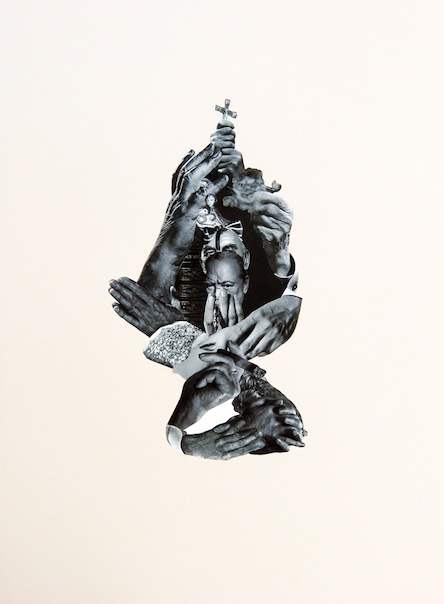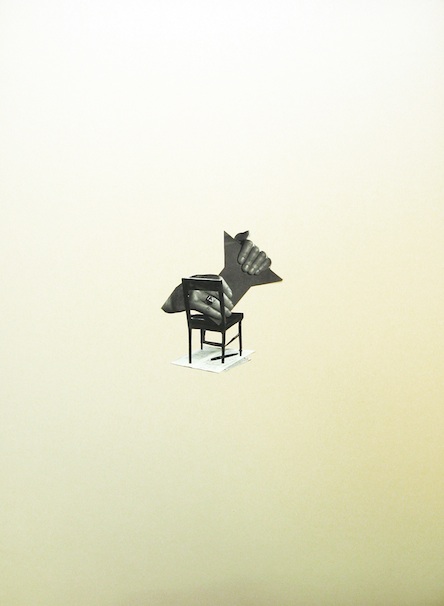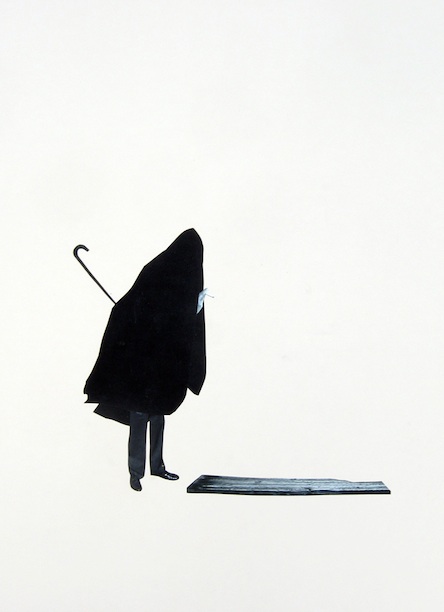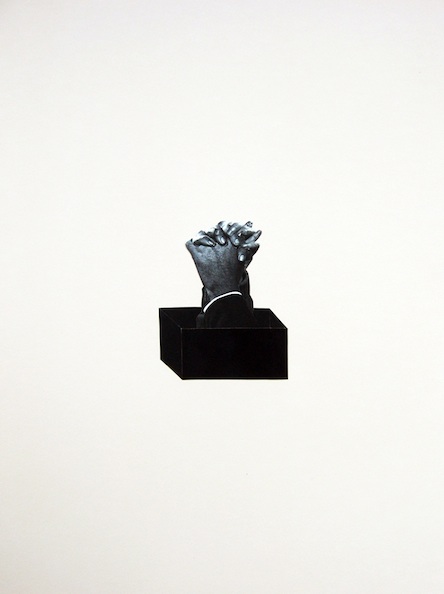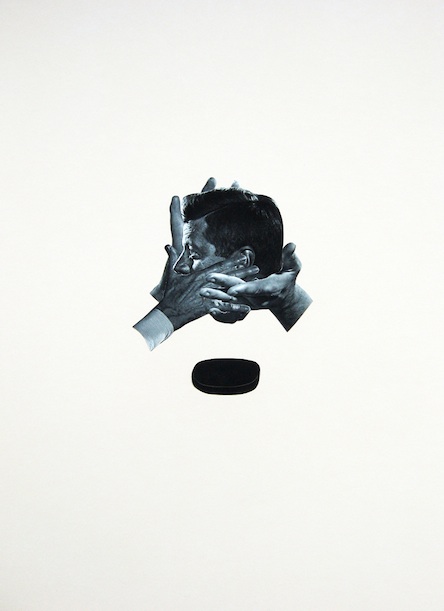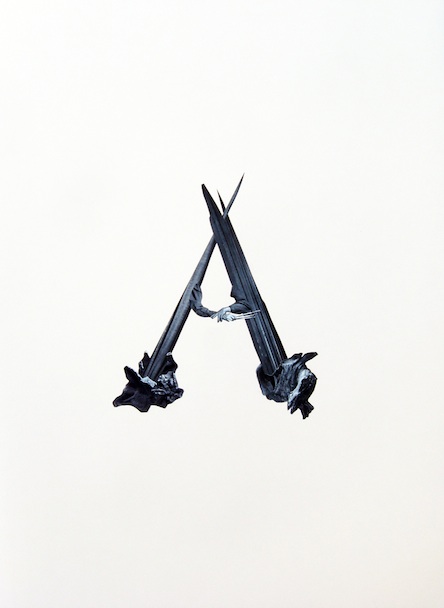February 2012
Caleb Speller / Collages & Mixed Media / February 3 – 26, 2012
“Public Domain” by Caleb Speller
The faces of yesterday’s heroes have been well documented by Yousuf Karsh in his many portfolios. These portraits reflect any number of human characteristics from adventure, defiance, beauty, to the creative impulse and its struggle and effect. The individuals within these photographs were engrained upon a generation to be remembered as emblems of historical significance — emblems that climbed Mount Everest, stood up for multi-racial equality, explored outer space, or commanded troops against hideous evil. Public Domain is a group of work which relies upon the photographs of Karsh to visualize a new era of historical storytelling, one in which the faces are recognizable to younger eyes but whose stories are completely and historically re-imagined.
Personalized history is something that is being built into our increasingly individualistic but yet more global society. As information floods in about our global conundrums and humanitarian crises in real time, it is impossible to feel sincerely connected to an infinitely expanding population. We avoid our connection with the past and present day reality by creating our own vision of people, places and events. We are now the editors of our own reality. In Karsh’s portfolios, personalities such as Edmond Hilary, Martin Luther King Jr., and Winston Churchill are displayed in black and white alongside a description of their achievements and why their lives were significantly placed within the social fabric of their time. Today’s generation, however, has a different brand of hero worship, one which is updated every five minutes, accessible anytime, and easily replaced. The long lasting impressions individuals made in the past are now reflected upon in verbal fast forward. Historical permanence is here today, gone tomorrow.
With the advent of instant messaging, social networking, and computer micro-communities, history as a whole is open to twenty-four hour reinterpretation, and can be custom tailored to fit the individual’s or the micro-communities’ ideology. The faces of today’s heroes are the same as the previous generations, Marilyn Monroe, Pablo Picasso, or Ernest Hemmingway, but now have entirely different symbolism attached to their images. Marilyn Monroe is no longer Hollywood’s pretty face, she is a feminists’ revolution campaign; Pablo Picasso is no longer an artist, he is a corporate role model; and Ernest Hemmingway is no longer a writer, he is a men’s club logo. These figureheads of yesterday which Karsh photographed so well still have visual resonance within the current generation, perhaps because of their photographic quality alone. An image worshipping public continues to absorb these faces into current popular culture but their back story and historical significance is left to the individual.
Public Domain is a visual interpretation of the conflicting historical duality that exists within the faces of yesterdays heroes as they have transformed into today’s personalized icons. The faces in Karsh’s photographs have been cut up, recoloured, and altered to portray society’s movement, ever closer, towards total disregard for historical permanence, privacy, ownership, and reality itself. This custom tailored idea of picking and choosing our own histories is making reality less meaningful and less believable than the fictitious re-imaginings of tomorrow’s historical future.
Artist Biography
Caleb Speller was born in Victoria, British Columbia at the end of 1982. He lives with his wife in a small house with a big deck; the kind built for rocking chairs and beat up guitars. In the mornings woodpeckers screech from the trees, snakes slither in the grass and the sun glows though the bedroom window. It is here in this setting where he wakes up to draws and collage before heading out to take some photographs, walk down to the shed to paint, or bike out to his ceramic studio. His artwork explores themes such as Canadian nationality, photographic performance, fabricated family history, and the human relationship man has with eternity. Caleb views his artwork as a visual biography made from inspiration in his personal life, legendary stories told by friends and family and fictitious visions of what the future could unfold.
Caleb shows his work at various art galleries and alternative venues around Victoria, Vancouver, and Ottawa.
